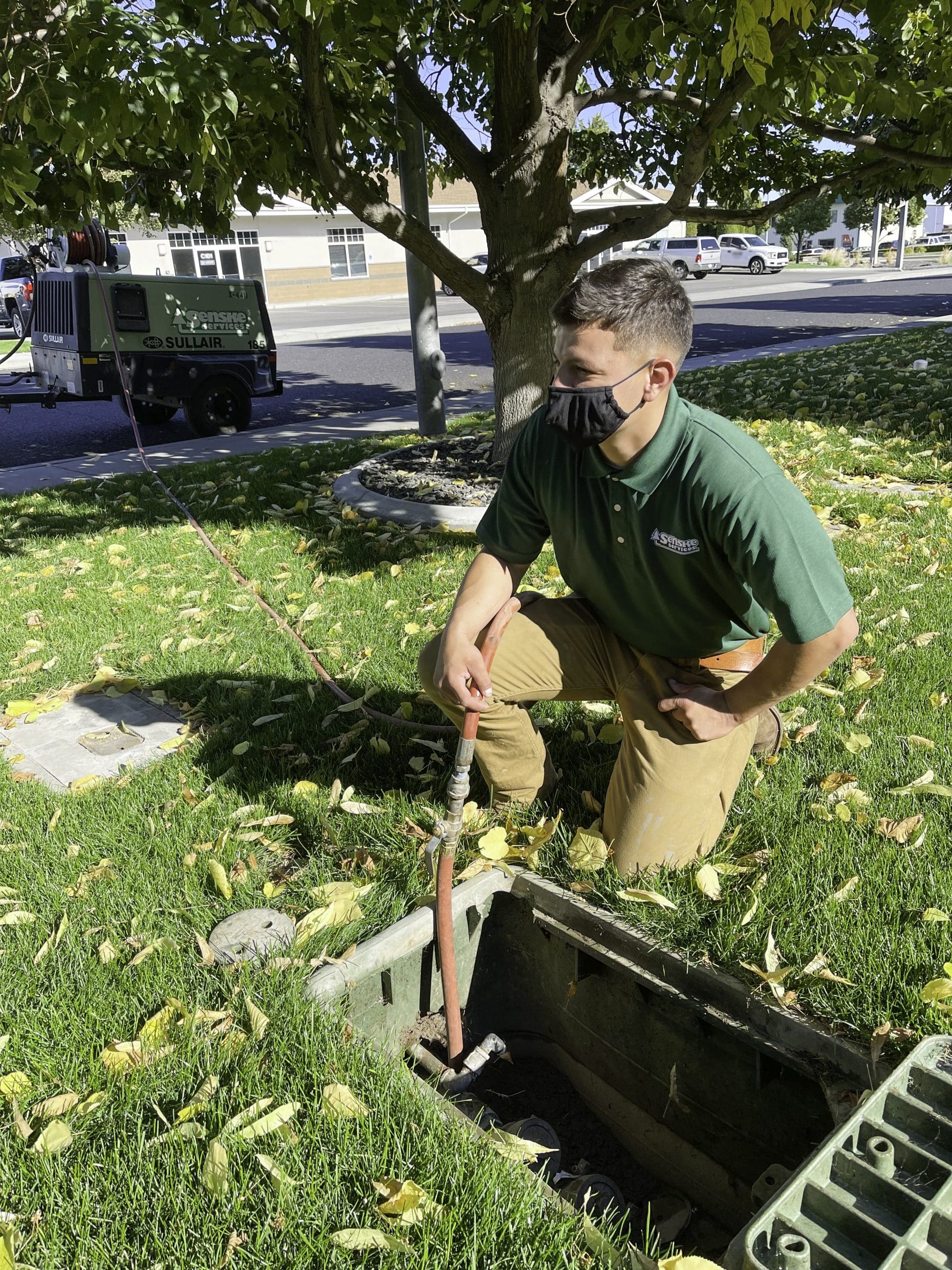
Fall is officially here and with winter lurking around the corner, it’s time for the necessary task of scheduling irrigation winterizations. By conducting irrigation blowouts in a timely manner, you can ensure there is no water in the irrigation system before the freezing temperatures arrive.
Perfect Timing
Obviously, where you are located will play a significant factor as to when is the perfect time for your region to conduct irrigation winterizations.
Charles Williams, director of contact center operations for Senske Services based in Kennewick, Washington, says they don’t start doing winterizations when the temperatures are still warm or if they’re still doing services that may require watering.
Erica Frost-Nissley, operations manager for Hydroscapes, Inc., based in Pottstown, Pennsylvania, says when it is too early to start doing winterizations varies based on the weather patterns they are seeing that season but in general, they find any time prior to Oct. 1 is too early for their customers.
When the ground temperatures get below freezing for an extended period of time and you cannot guarantee the service is often viewed as the cut-off for irrigation winterizations.
“Our policy is to schedule all of our active winterization customers prior to Thanksgiving every season,” Frost-Nissley says. “In our region, we typically do not have enough consecutive nights of low enough temperatures for systems to experience freeze damage prior to Thanksgiving.”
Scheduling Irrigation Winterizations
Hydroscapes does a mass pull of all their clients contracted for a winterization service for the current season. Their software program will create a pending work order for each customer and then they build their ‘master schedule.’
“A master schedule is our ideal schedule, taking into account many logistical and strategic factors, which ultimately allows us to reach our productivity and revenue goals while still accommodating our customers’ needs,” says Frost-Nissley.
After building their master schedule, Hydroscapes will contact their customers two to three weeks prior to the tentative date selected for them. This is typically on the 4th Monday of September, as they tend to start irrigation winterizations on the second Monday of October.
“We currently send our appointments out via email through our software program,” Frost-Nissley says. “These emails contain information regarding the date, arrival window, and service notes, as well as a confirmation link. If the suggested appointment date and time work well, our customers simply click on the link and it automatically confirms it on our schedule. If the suggested appointment doesn’t work well, customers will email or call us.”
If a customer has to reschedule, Frost-Nissley says they are very persistent in ensuring they can service that client within the proper timeframe.
“We will call, text, and email to reach customers for these tentative appointments,” she says. “Luckily, we have very few customers who don’t understand the importance of winterizing. Educating customers during their system installation, or during the initial contact with our office, is key.”
At Senske Services, their supervisor team in the branch collaborates with their router and schedules out existing customers’ winterizations. Since their customers’ services are recurring, Williams says they prenotify the customers 1-2 days before the service either by mail, text or automated call.
“If a customer calls in to try to push it out, we let them know how time-sensitive they are,” Williams says. “Delays on service delivery may cause us to not be able to perform the service at all.”
Scheduling Additional Customers
Both Senske and Hydroscapes prioritize their active irrigation customers by pre-scheduling them but they will work to include new customers as well.
As customers call in at Senske, their customer service team works with the supervisor team to get a date for the new customers. Customers can also make scheduling requests online, but Senske does not give them the option to pick the date through that channel.
Hydroscapes strategically schedules buffer in their technicians’ schedules each day.
“That buffer is to deal with the unexpected, write estimates, or fit in an additional appointment,” Frost-Nissley says. “As customers reschedule, we are able to strategically manage timeslots to fit in last-minute customers.”
Because they do the math and engineer their schedule so they can accommodate all of their current clients, their customers don’t have to worry about all the time slots being filled.
“We allow for about one additional week of stragglers,” Frost-Nissley says. “Stragglers are either new customers that called in very late or existing customers that, for whatever reason, could not confirm any other appointments during our standard 7.5-week window.”
Williams says if it is toward the end of their blowout season and they can fit a customer in, they will.
“Sometimes we must charge a premium for the late-season addition,” Williams says. “In some cases, we will not guarantee the service if freezing temperatures have already occurred.”
He says they do not like to overpromise, especially with irrigation.
“If we are unable to accommodate a customer that calls in too late, we let them know that we will not be able to perform that service this year but can get them scheduled next year so they don’t have to worry about it moving forward,” Williams says.

